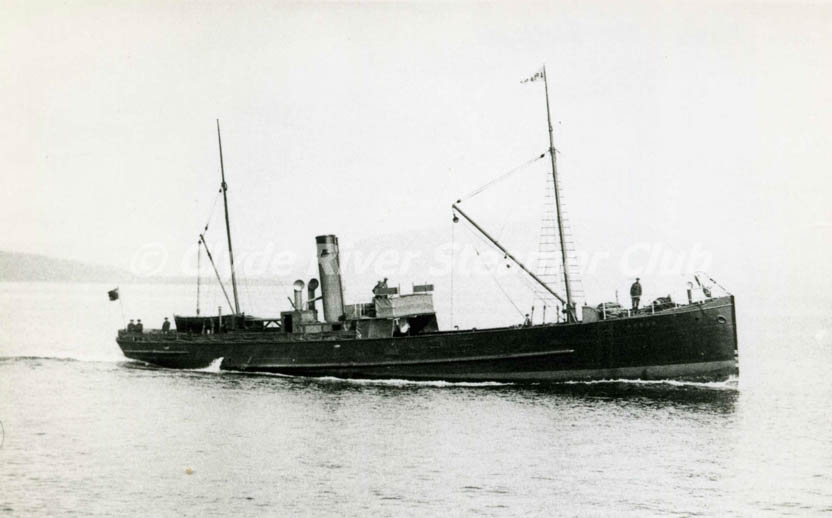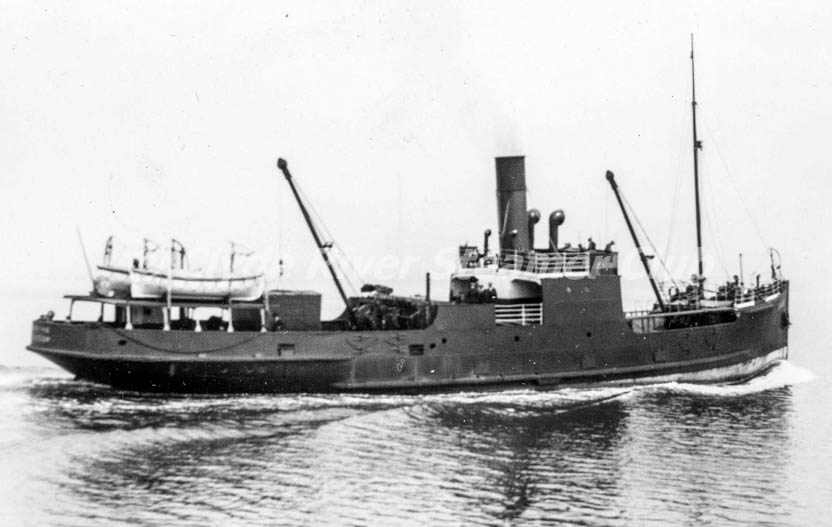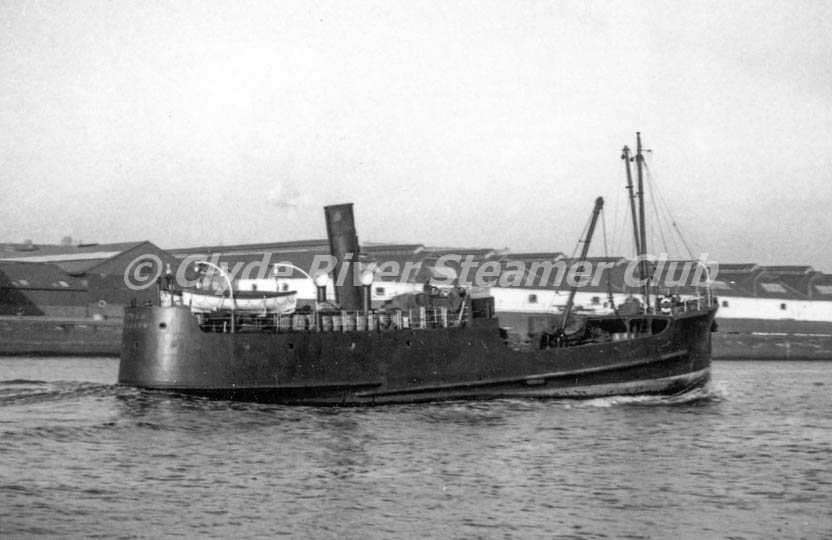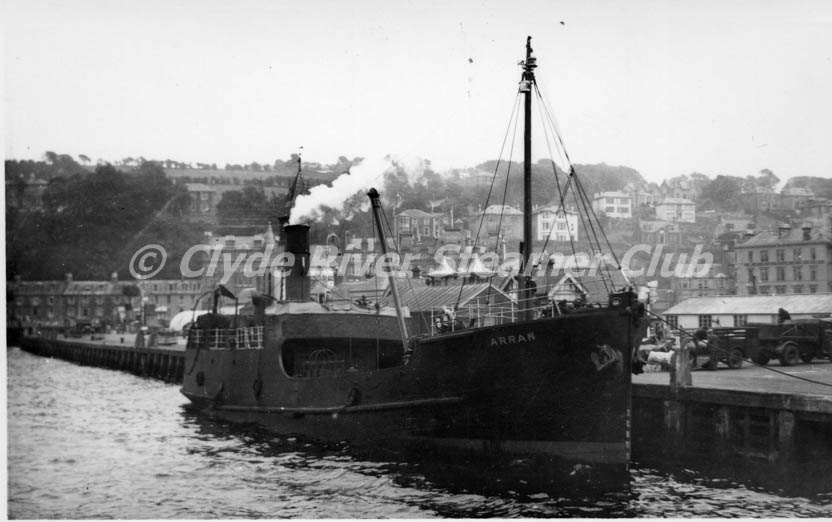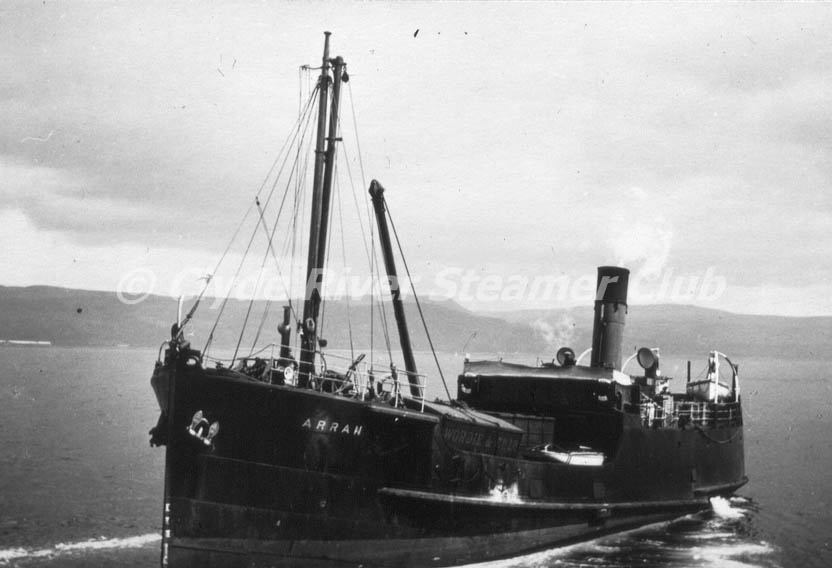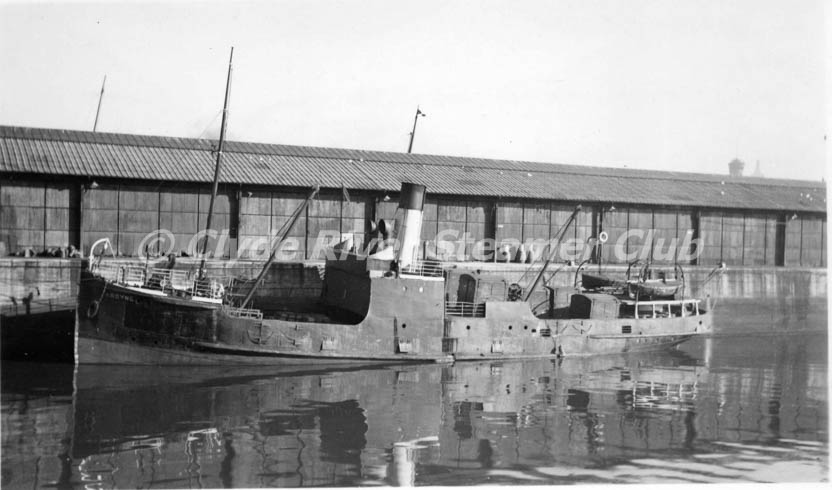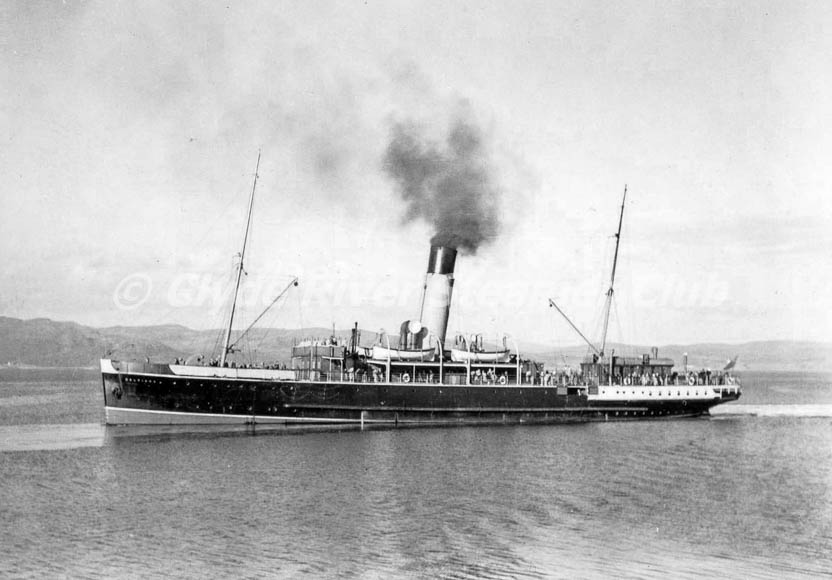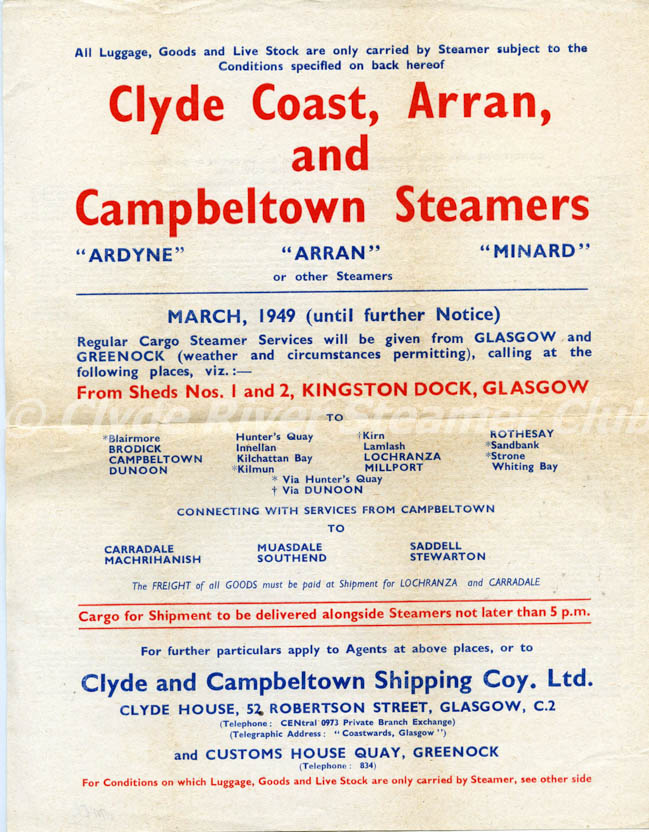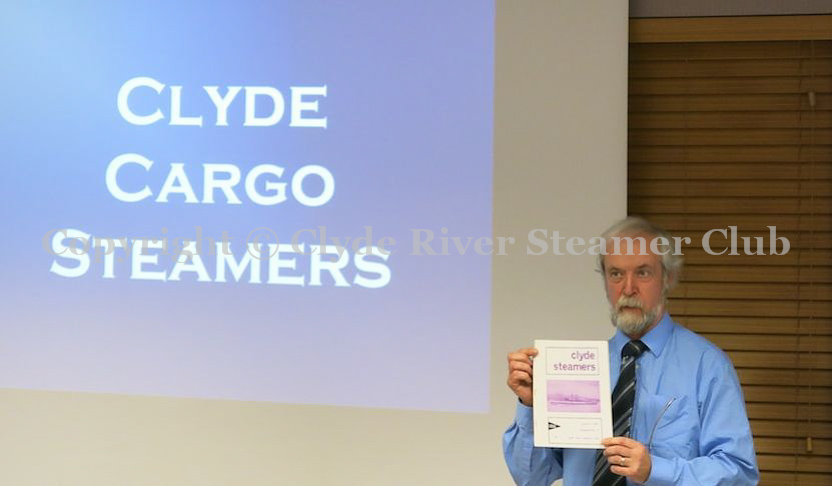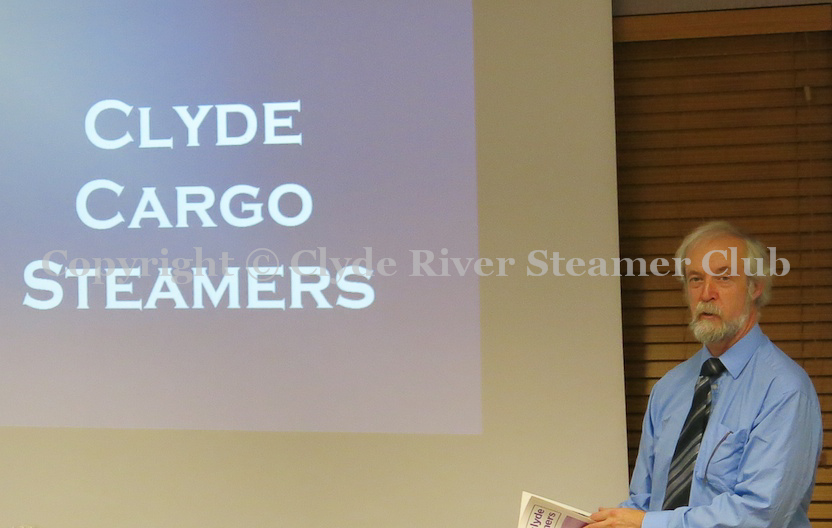
The 2015-16 session of monthly meetings at Jurys Inn, Glasgow, began on October 14 with a survey of that most overlooked and under-appreciated of Clyde fleets — the cargo steamers that unobtrusively delivered goods to coastal communities throughout the year. And who better to illuminate the subject than John Newth, an enthusiast with few rivals when it comes to researching the byways of yesteryear. As he said in his introductory remarks, “these were not puffers, but small coasters that ran to regular schedules”. John’s specific area of interest was Clyde Cargo Steamers, a company created in 1915 as a pooling arrangement between David MacBrayne Ltd, John Williamson, Hill & Co, and the Minard Shipping Company, to ensure the continuity of essential deliveries in a time of war.
Initially the fleet comprised just three ships under charter — Bute 4, Arran ex Barmore and Minard Castle, whose all-black funnel eventually became the norm for the rest of the fleet. These were among the few vessels allowed through the wartime defence boom, with Colintraive, Lochgair, Ormidale, Skipness and Whiting Bay among their destinations. Arran was sold in 1916 but continued to be used occasionally, along with other back-up vessels such as MacBrayne’s Cygnet. After the war the pooling arrangement became permanent — though it was not until March 1922 that Clyde Cargo Steamers became shipowners for the first time, with Bute 4 purchased for £12,750 and Minard Castle for £9,170. Lapwing, initially retained on charter, became a fully fledged member of the fleet in 1923 (at a price of £4,750) — as did another previously chartered vessel, the small coaster Jane (£908-11s-10d). Early in 1925 the company was able to ‘take out’ its main rival, Steel & Bennie, from whom it purchased the lighter Lintie, together with the goodwill of the Greenock trade, for £1,650 — though within months Lintie was re-sold and the Greenock trade suspended.
Up to this point John’s talk had included a good number of facts and figures, all of which charted the company’s varying fortunes in its first decade. But now came a story about Lapwing at Dunoon. On one occasion her cargo included a large, heavy container full of household furniture, which needed to be winched onto the pier. Unfortunately, given the low tide and the weight of the container, the jib of the steam crane on Lapwing could not quite lift the cumbersome container high enough to get it onto the pier. So someone came up with the bright idea of swinging the jib from side to side with a view to lobbing the container to safety. On one of the seaward swings, the inevitable happened. The jib of the crane broke, container and contents landed in the water, and Lapwing rolled even further over. She began to take on water and, had it not been for the quick actions of Duchess of Fife, the outcome might have been different. Lapwing was duly raised, taken to Lamonts at Greenock for repairs and eventually returned to service with a new name — Cowal.
Having hitherto relied on old tonnage, the company in 1926 commissioned two new boats, Minard and Arran, leading to the disposal of Minard Castle and Jane. The success of Minard was such that a similar vessel, Ardyne, was ordered for 1928. With a network that included sheep runs from Arran, a hefty summer potato trade from Kilchattan Bay and a daily 2am ‘express’ cargo service from Glasgow to Rothesay, the company was at its zenith.
From that point it was a case of gentle decline, as road transport ate into profits — despite the company’s decision to operate its own lorries. On 31 December 1932 Arran stranded on Barmore Island in Loch Fyne (and was replaced by a vessel of the same name). Three years later Bute 4 ran aground on Cumbrae and was not considered worth repairing.
Despite the increasing precariousness of its finances, Clyde Cargo Steamers took over the Campbeltown and Glasgow company’s ailing business in 1937, and thereafter the merged fleets — under the name of Clyde and Campbeltown Shipping Company — adopted MacBrayne funnel colours. Marie, a small cargo boat previously used on charter, joined the fleet in 1939 — and even visited Islay in 1944 to bring back 50 tons of whisky. The Campbeltown steamers Dalriada and Davaar did not survive the war, and it was not until March 1946 that the cargo boats were derequisitioned.
By 1949 deliveries to Holy Loch piers had ended, leading to the sale of Marie, and later that year the company’s interests were taken over by the British Transport Commission. Ardyne made the last cargo sailing from Campbeltown on October 26, and from the winter of 1950-51 the Glasgow-Rothesay service was gradually curtailed. After the arrival of the ABC car ferries in 1954, Minard and Ardyne were withdrawn. Arran — which suffered the indignity of having her name ‘stolen’ by one of the new ferries — continued serving Brodick and Millport under the name of Kildonan, until the new Glen Sannox entered service in 1957. The end came later that year, when Kildonan was laid up and the Clyde and Campbeltown Shipping Company was formally renamed Caledonian Steam Packet Company (Irish Services) Ltd.
In his vote of thanks, CRSC president Angus Ross praised John for highlighting the important role played by cargo boats not only in the Clyde steamer scene of their day, but also in the evolution of present-day services. A large gathering of members and friends signalled their appreciation with rousing applause.












